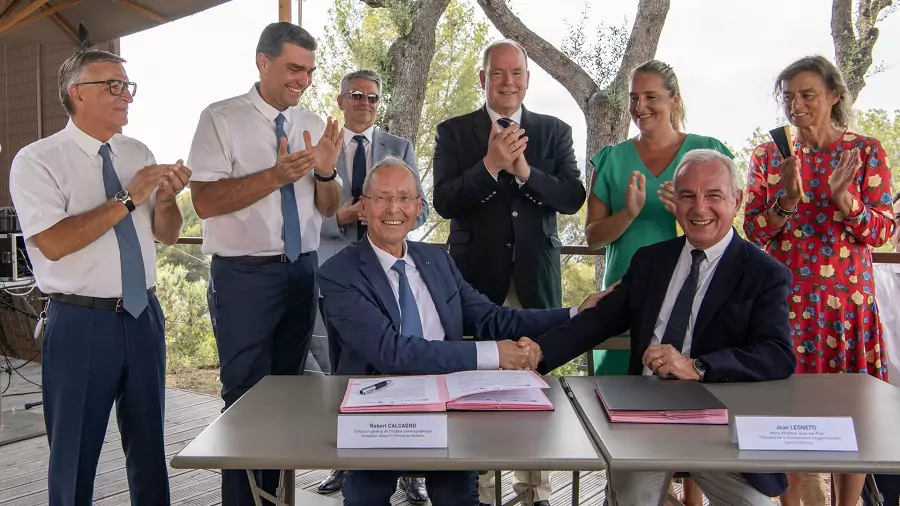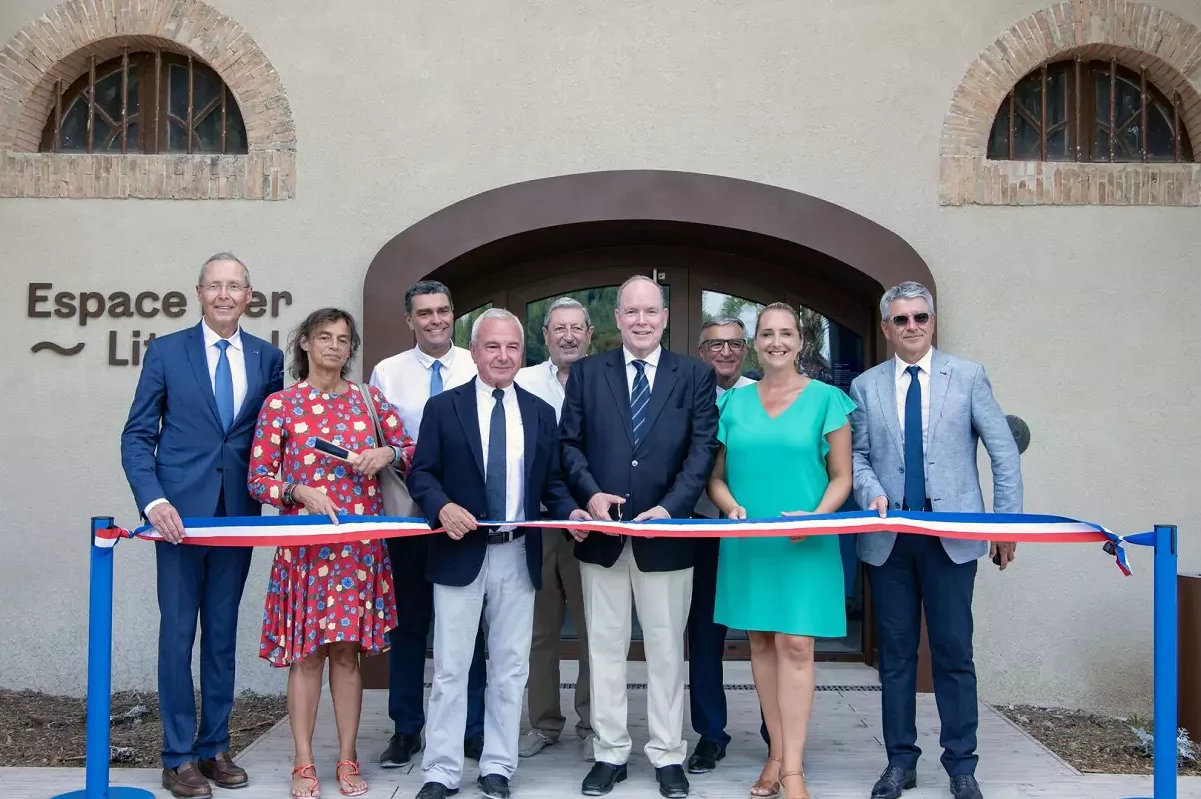Prince Albert headed down the coast to Antibes this week to officially inaugurate an exciting new coastal museum, the Posidonia, founded with the support of Monaco’s Institut Océanographique.
Posidonia has been in the works for almost a decade. The theme of the museum, which includes a 10,000-litre aquarium filled with local species of marine life, is the region’s coast – above and below the waterline – so its setting on the edge of Cap d’Antibes couldn’t be more fitting.
The museum has found a home in the former military space of the Batterie du Graillon on the western side of the peninsular and a stone’s throw from the glamourous Hôtel du Cap-Eden-Roc.
France’s Ministry of Defense handed over the “keys” to the 2.2-hectare site, which is now part of a protected natural zone, in 2014 and it has since undergone a long period of renovation, costing some €4.2 million, to become the “Posidonia: Espace Mer & Littoral” that opened to the public in June.
This week, it was officially inaugurated with a cutting of the ribbon ceremony, and Monaco’s Prince Albert II was given that special honour.
“We need more places like this”
The Prince, a life-long champion of the oceans and their protection and conservation, wasn’t just in town to tour the new establishment, despite the cameras capturing his enthusiasm for its interesting exhibits and interactive displays.
In fact, Prince Albert was there to formalise a working and cooperative agreement between the Posidonia: Espace Mer & Littoral and the Principality’s prestigious Institut Océanographique alongside the General Director of the Monaco establishment, Robert Calcagno.
“We need more places like this,” Prince Albert told media gathered, clearly impressed with the ambitious project, “that’s why it deserves to be supported, encouraged, accompanied.”

As such, Monaco’s Oceanographic Institute, which was founded in 1906 by Prince Albert I, will share its own knowledge with those working at Posidonia in an effort to expand its century-old mission to “know, love and protect the ocean” beyond the borders of the Principality.
Jean Leonetti, the mayor of Antibes-Juan les Pins and the president of the Communauté d’Agglomération Sophia Antipolis, thanked Prince Albert for his support, saying that the project had been achieved with the help and expertise of the Monegasque institution.
Posidonia: exhibits inside, outside and underwater
More than 1,300 people, from tourists to local schoolchildren out on end-of-year trips, have already visited the museum.
What awaits those yet to try it out includes: a 10,000-litre aquarium dedicated to a range of Mediterranean species; a permanent exhibition presenting the four main habitats found in the Mediterranean basin; a virtual reality dive beneath the waves; an interactive exhibition on the military past of the Batterie du Graillon; a walking tour through the Alep pine forest that surrounds the main building; and exceptional views that reach as farwest as the Cap Camarat off Saint Tropez and as far north as the mountain peaks of the Mercantour National Park.
When and how to visit
The Posidonia is open until the start of September from Tuesday to Sunday, 10am to 7pm. It will close at 5pm in the remaining months of the year.
Parking is tight near the museum – there are just 30 spaces in the Graillon parking below and the area is popular with beachgoers – but the site is also accessible via the Envibus Line 2.
Entrance is €12 for adults, €6 for children and free for those under six. Families can enter for €24 and virtual reality masks, useful to fully make the most of some of the exhibits, can be rented for €3.
There is currently no dedicated website for the museum.
Make sure you’re never left out of the conversation.
Sign up for the Monaco Life newsletter, and follow us on Facebook, Twitter, Instagram and LinkedIn.
Photo via FPA2
